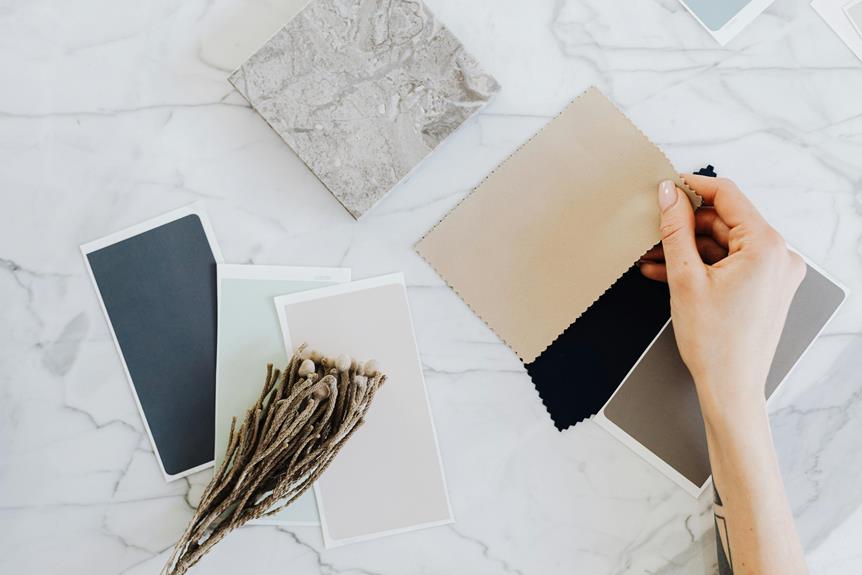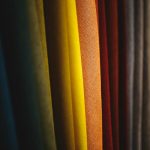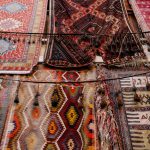When you're choosing the right taffeta for your project, it's essential to consider the fabric's purpose and characteristics. Are you aiming for something formal or casual? The weight and finish will significantly impact your design, as heavier taffeta lends structure while lighter versions offer flow. You'll also want to think about texture and color to ensure they align with your vision. Understanding these factors can elevate your project, but there are more nuances to explore that might surprise you. What other aspects should you keep in mind to achieve the best results?
Table of Contents
Understanding Taffeta Types
When selecting taffeta for your project, it's essential to understand the different types available and how they can influence your design. Taffeta comes in several varieties, each offering unique characteristics. The most common types are silk taffeta, polyester taffeta, and nylon taffeta.
Silk taffeta is luxurious and has a beautiful sheen. It's perfect for formal occasions, such as weddings and evening gowns. However, it's more expensive and may require special care.
On the other hand, polyester taffeta is more affordable and durable, making it a popular choice for everyday garments and home décor. It mimics the luxurious look of silk but is easier to maintain.
Nylon taffeta is lightweight and often used in outerwear and linings. It's not as crisp as silk or polyester but offers excellent water resistance, making it ideal for outdoor projects.
Each type of taffeta has its own feel and drape, which can significantly impact your finished product. By understanding these distinctions, you can make an informed choice that aligns with your design vision and practical needs.
Evaluating Weight and Drape
Evaluating the weight and drape of taffeta is crucial for ensuring your project achieves the desired look and feel. The right balance can elevate your design, while the wrong choice could lead to disappointment.
Here are some factors to consider:
- Weight: Lighter taffeta offers a soft, flowing drape, perfect for delicate garments or soft furnishings.
- Drape: Heavier taffeta holds its shape well, making it ideal for structured designs like ball gowns or formal wear.
- Use Case: Think about how you'll use the fabric. For example, if you're creating a curtain, you might prefer a heavier drape for a more luxurious effect.
When you evaluate these aspects, you'll be better equipped to choose the right taffeta for your needs.
Don't rush this step; take the time to feel the fabric and visualize how it will perform in your project.
The right weight and drape can make all the difference in achieving that perfect final product.
Considering Texture and Finish
After you've considered the weight and drape, it's time to explore the texture and finish of taffeta to ensure it matches your project's vision.
Taffeta comes in a variety of textures, from smooth and sleek to more textured surfaces. Think about how the texture will affect the overall look and feel of your project. A glossy finish can add a touch of elegance, making it ideal for formal wear or special occasions. On the other hand, a matte finish offers a more understated vibe, perfect for everyday garments or casual decor.
Pay attention to how the texture interacts with light. A shiny taffeta can create beautiful reflections, enhancing the visual interest of your design. If you're aiming for a more subtle appearance, go for a fabric that diffuses light softly.
Consider your project's intended use as well. If it's a garment that will see a lot of movement, a more durable texture might be necessary to withstand wear and tear.
Ultimately, choosing the right texture and finish will elevate your project, giving it the depth and character you envision.
Assessing Color and Print Options
Choosing the right colors and prints for your taffeta project can significantly impact its overall aesthetic and mood. When selecting your fabric, consider these key factors to ensure your choices align with your vision:
- Color Psychology: Different colors evoke various emotions. Think about the mood you want to create.
- Print Style: Patterns can range from floral to geometric. Choose a print that complements your theme.
- Seasonality: Certain colors and prints are more popular in specific seasons. Consider seasonal trends to keep your project relevant.
Once you've narrowed down your options, gather swatches or samples to see how they look in different lighting conditions. This step will help you visualize the final outcome and ensure your selections align with your project's intent.
Don't hesitate to experiment with bold colors or unique prints; sometimes, the most unexpected choices can lead to stunning results. Ultimately, think about how your color and print selections will bring your taffeta project to life, creating a cohesive and captivating look.
Matching Taffeta to Project Needs
Understanding how to match taffeta to your project's specific needs will help you make the most of this versatile fabric.
First, consider the purpose of your project. Are you designing a formal gown, a decorative tablecloth, or perhaps a costume? Taffeta comes in various weights and finishes, so choose one that aligns with your vision. For formal wear, opt for a heavier taffeta that drapes beautifully, while lighter options work well for casual applications.
Next, think about the texture and sheen. If you desire a glossy look, go for a shiny taffeta; if you want a more subdued finish, matte options are available. Additionally, consider the color and pattern—bold colors can make a statement, while softer hues might suit a more elegant design.
Don't forget about functionality. If your project requires durability, select taffeta with a tighter weave. For items that'll see lots of movement, a more flexible fabric is essential.
Care and Maintenance Tips
Taking care of your taffeta is essential to keep it looking its best.
You'll want to understand the proper washing techniques and how to store it correctly to maintain its shape and shine.
Let's explore these care and maintenance tips to help you preserve your fabric for years to come.
Washing Techniques Explained
When it comes to washing taffeta, gentle care is key to preserving its delicate texture and vibrant colors. To keep your fabric looking its best, follow these essential washing techniques:
Hand wash: Fill a basin with cool water and a mild detergent. Gently agitate the water and submerge the taffeta. Avoid scrubbing or twisting it.
Machine wash: If you're short on time, place the taffeta in a mesh laundry bag and use the delicate cycle with cold water. This minimizes friction and protects the fabric.
Avoid bleach: Never use bleach, as it can damage the fibers and fade the colors. Stick to color-safe detergents for the best results.
Air dry: After washing, lay the taffeta flat on a clean towel to absorb excess water. Hang it to air dry away from direct sunlight, which can cause color fading.
Storage Recommendations Provided
Properly storing taffeta ensures it stays in excellent condition for future projects.
First, make sure your taffeta is completely dry before storage to prevent mildew. Fold it gently to avoid creasing, and use acid-free tissue paper between layers to minimize friction and protect the fabric's finish. Avoid hanging taffeta, as this can lead to stretching or distortion; instead, lay it flat in a cool, dry place.
When choosing a storage container, opt for a breathable cotton bag or a box lined with acid-free materials. Avoid plastic bags, as they can trap moisture and promote mildew growth. Keep your taffeta away from direct sunlight to prevent fading and discoloration.
Regularly check your stored taffeta for any signs of damage or pests. If you notice any issues, act quickly to prevent further deterioration. If you're storing taffeta for an extended period, consider adding lavender sachets or cedar chips to deter moths, but ensure they're not in direct contact with the fabric.
Frequently Asked Questions
What Are the Environmental Impacts of Taffeta Production?
Taffeta production can lead to significant environmental impacts, like pollution from chemicals and water usage. You'll want to consider sustainable options, as these can reduce harmful effects on ecosystems and contribute to a healthier planet.
Can Taffeta Be Recycled or Composted After Use?
You can't typically recycle or compost taffeta since it's often made from synthetic materials. However, consider repurposing it or donating any unused fabric to reduce waste and promote sustainability in your projects.
How Does Taffeta Compare to Other Fabrics for Durability?
Taffeta's durability stands out against many fabrics. You'll find it resists wrinkles and holds shape well, unlike softer materials. If you're after longevity, taffeta's your go-to choice for structured garments and formal wear.
Is Taffeta Suitable for Outdoor Use or Weather Resistance?
Taffeta isn't ideal for outdoor use since it lacks weather resistance. It can't withstand moisture or heavy winds well, so if you're planning outdoor activities, consider more durable, weatherproof fabrics instead for better performance.
What Are Common Alterations Made to Taffeta Garments?
When altering taffeta garments, you often shorten hems, adjust bodices for a better fit, or add lining for comfort. You might also modify sleeves or embellish details to enhance the overall design and style.
- Tetron Fabric for Marine Applications: Durability and Use Cases - June 18, 2025
- Tetron Fabric for Outdoor Furniture: Weather Resistance and Care - June 18, 2025
- Tetron Fabric for Wall Coverings: Style and Application Tips - June 18, 2025







